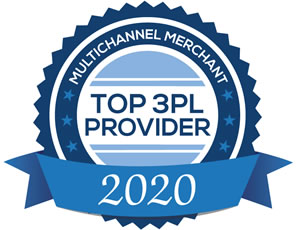
Dan Cence, CEO of Sprocket Express fulfillment and logistics in the Greater Boston area, has worked with new eCommerce shops for twenty years. He is familiar with the hurdles of transitioning to an outsourced fulfillment partner and he has helped numerous small businesses grow with third-party logistics services.
Moving to a fulfillment center is an essential step to support your growing business. At the beginning, it is usually more efficient to handle your own fulfillment and shipping until things take off, but once you are ready to transition, you'll want to know how to make the new partnership run as smoothly as possible.
Here are three areas Dan has identified to help your business successfully integrate into a fulfillment house.
Communication
Information exchange is key to a successful working relationship. Any advance notification of upcoming events such as sales, new products, new markets etc. will be helpful to the fulfillment house so they can plan staffing needs around sales spikes or new requirements.
Sharing this information gives your logistics partner the lead time to prepare for business changes smoothly and efficiently. This is one of the reasons we consider our client relationships to be partnerships. When both parties have all of the information, they can truly work together for mutual success.
Planning
Consider your overall supply chain to identify points for potential slow downs. Then work with your fulfillment company to minimize the issues that slow down the various steps in the supply chain.
For example, having the manufacturer prepare a product for shipping as much as is practical can greatly reduce preparation time in the warehouse.
Likewise, ensuring your inventory arrives with detailed packing slips helps the warehouse efficiently receive, which reduces the associated time and cost.
Proper planning not only makes receiving and shipping more efficient, but it helps you avoid delays and extra costs that impact your bottom line.
Preparation of Products
Dan points out that the preparation of products for ecommerce fulfillment is different than that of retail sales. Having your manufacturer design for these requirements is key to efficiency and your customer’s satisfaction.
As distribution costs can run from 8% to 25% of sales, any steps you can take to reduce costs hit the bottom line pretty significantly.
Think about shipping box size, packaging resilence, accessories and other aspects of your product. For example, oversized packaging or delicate packaging is going to increase shipping costs due to box size or padding. If you have product accessories that typically go with a product, consider pre-bundling at the manufacturer to avoid additional pick and pack charges for these separate items.
There are many ways that packaging matters beyond the box. Read our article for more ways to leverage packaging for greater customer satisfaction (and loyalty).
Conclusion
At Sprocket Express, our ideal client has an order base of several hundred per month. If you are just getting started, we can still be helpful with pointers to get you in the right direction. If you have reached that threshold and are looking for a reliable fulfillment partner, we would be happy to customize a quote for you. Whatever your status, feel free to contact us to explore your options.
Already using outsourced fulfillment? See how well your provider scores in our satisfaction quiz.
Business Tips and Industry News
For more news and tips on all things business and e-commerce, visit our e-zine. Our e-zine is also available as an rss feed.



